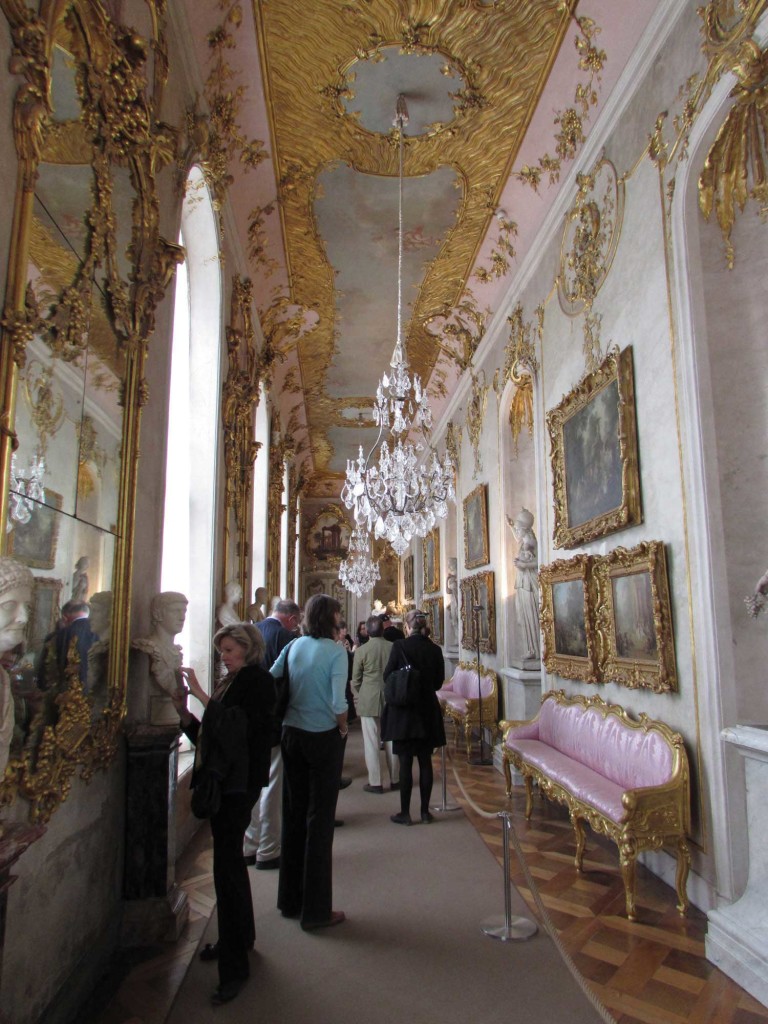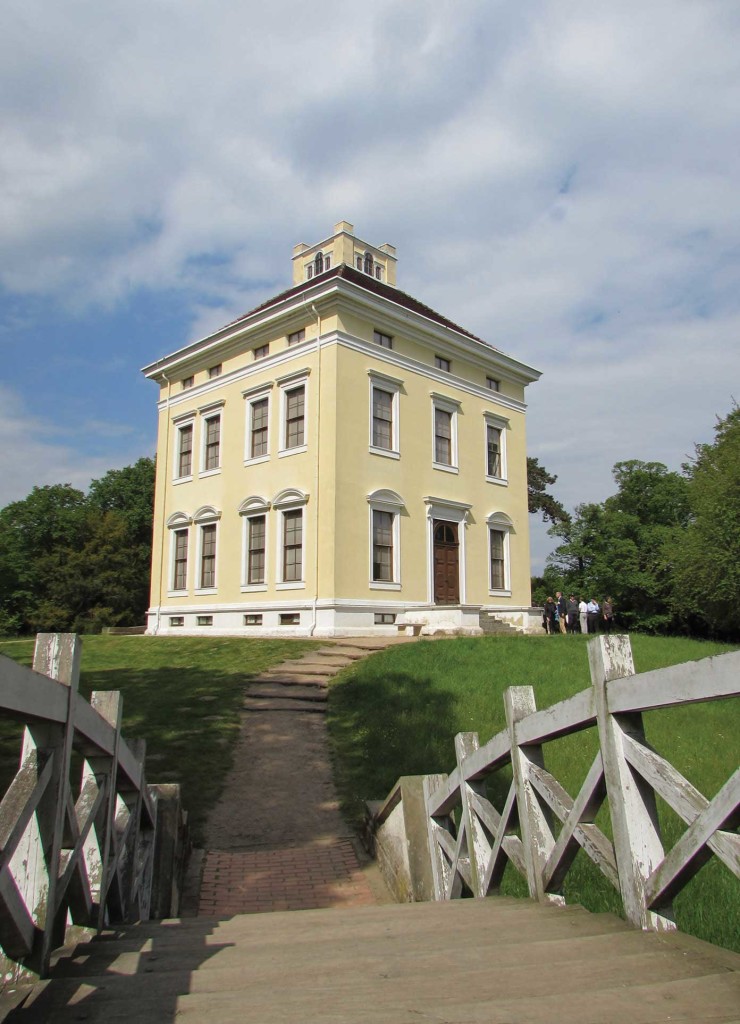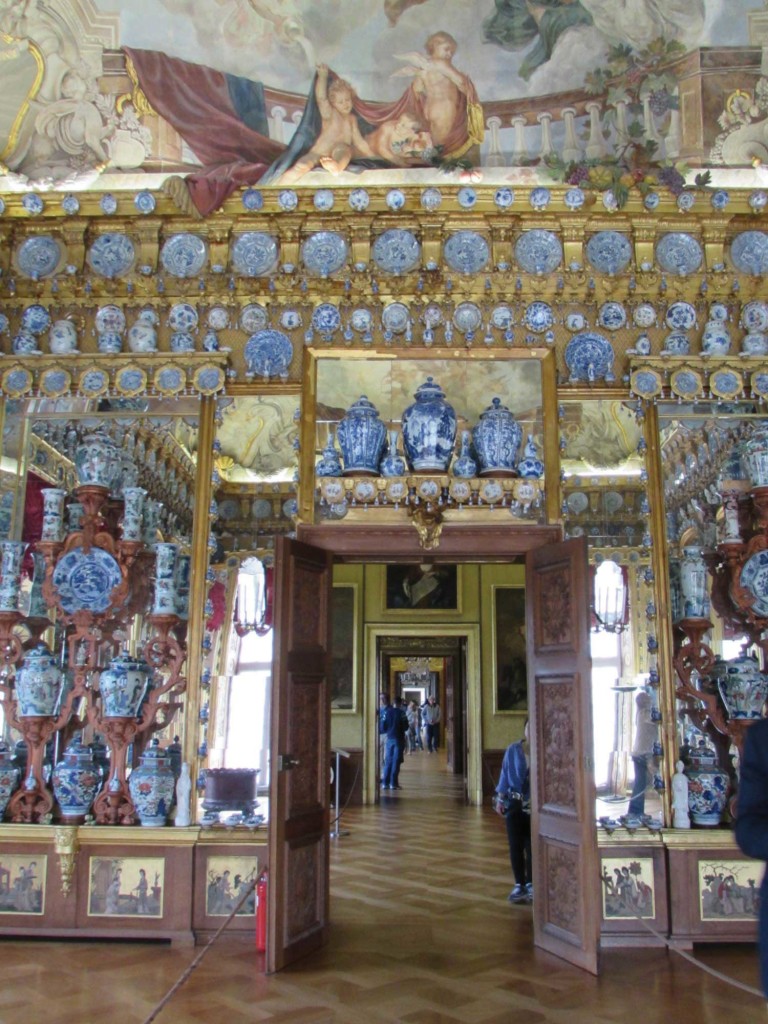Discovering Eastern Germany’s Treasures
EVENTS > STUDY TRIPS ABROAD
SPRING 2015 STUDY TRIP ABROAD IN REVIEW
By Carol Borchert Cadou
Overnighting in the former palace of Augustus the Strong’s favored mistress before viewing his porcelain of remarkable abundance and jewels of extraordinary size in Dresden. Wartime recounts and wine tastings with Prinzessin zur Lippe near Meissen. Bach’s melodies floating through the air of the composer’s resting place at the Thomaskirche in Leipzig. An historic gondola ride to reach Leopold III’s Gothic House at Wörlitz near Dessau. And the preserved treasures of a once divided Berlin. This was the Decorative Arts Trust’s spring 2015 Study Trip Abroad, Courtly Collections: Dresden, Leipzig, and Berlin.
As celebrations and memorials across the United States commemorated the 70th anniversary of the end of World War II, Trust members participated in two back-to-back tours of Germany showcasing collections and interiors preserved and restored following the War. Guided throughout by the talented and knowledgeable art historians Tom Abbott and Tim Schmützler, we quickly gained an appreciation for the collecting power and tastes of Germany’s 16th-18th century Saxon aristocracy and Prussian royalty, and insight into 20th and 21st-century German society.
In Dresden, we were left breathless by the quantity and extent of Augustus the Strong’s dedication to the arts. From the Chinese, Japanese, and Meissen porcelain and Old Masters paintings displayed within his Baroque museum masterpiece, the Zwinger, to spectacular specimens of porcelain, glass, silver, paintings, precious stones, and ivory in his Green Vault, Augustus’ acquisitions suggest the depth of his wealth as well as the breadth of his network throughout Europe and Asia in the early 18th century.
Today’s Dresden, however, stands in stark contrast to the city’s condition in 1945, when it was decimated by three days of Allied bombing and the resulting fires. An estimated seventy percent of the old city was destroyed, but the inhabitants ultimately chose to restore the historic buildings to their pre-war appearance in an astounding example of reconstruction and resilience. We were delighted to see that the Old Market Square has been returned to its 18th-century pastel-painted facades, with the Frauenkirche recently rebuilt using a combination of salvaged stones and new blocks from the original quarry.
The presence of many of these rare and remarkable objects in Dresden represents a nearly 70-year journey. Train car loads of fine and decorative arts were confiscated during World War II and removed to Moscow by the occupying Soviet Army, but barely half were subsequently repatriated. Our minds were boggled by the great condition of the collections despite their travels, and by the knowledge that their enormous scope represents only a fraction of their original extent.
Touring the old towns, with their charming squares, winding streets, and historic churches, illuminated a world beyond the larger city centers. While the vistas were dominated by an agricultural landscape, the cities proper were home to a series of prominent thinkers and musicians—Martin Luther in Wittenburg; Johann Sebastian Bach and Johann Wolfgang von Goethe in Leipzig. Venturing out into the countryside down the Elbe River, we visited the town of Meissen and its porcelain factory for a terrific on-site education of the origins, secrecy, patronage, and influence of German porcelain manufacturing.
A particularly memorable expedition to the countryside was the visit to Schloss Proschwitz with Prinzessin Alexandra zur Lippe. Welcoming us with champagne in her vineyards overlooking Meissen, the Princess shared the remarkable journey she and her husband have undertaken since German reunification to purchase back his family’s ancestral dwelling and vineyards after their confiscation during World War II. Their spirit of resilience and entrepreneurship inspired us, as did the wines she served over a candlelit meal.
The secondary homes of Saxon royalty also dotted the country landscape, such as the magnificently sited hunting lodge Schloss Moritzburg, extensively enhanced by Augustus the Strong. The English-style landscapes of Prince Leopold III’s Worlitz Park proved to be even more memorable when viewed by gondola. Schloss Worlitz was the first classically styled house in Germany, drawing comparisons to several English country houses as well as American residences.
In Berlin, we transitioned from the elegantly designed and furnished suburban royal palaces to the thriving German capital city. Historic residences included Schloss Sans Souci in Potsdam, where we were charmed by the Frederick the Great’s private home, where he escaped court life for the companionship of gentlemen friends, artists, and scholars. Schloss Charlottenburg, intended as a summer home for Friedrich III’s wife, Sophie Charlotte, featured a stunning enfilade of rooms filled with collections amassed over a century, culminating in the floor-to-ceiling gallery of Chinese and Japanese porcelain, the Porzellan-kabinett, beautifully restored following World War II.
Within walking distance of Berlin’s elegant Regent Hotel, Trust members ventured out to behold the abundance and diversity of the city’s museum collections. The effects of the war, however, are evident throughout the city. Pock-marked facades recall the intense street fighting, and exposed brick interior walls at the Neue Museum bear witness to the destruction of civic buildings by bombing raids. A particularly poignant exhibition at the Bode Museum underscored the artistic forfeiture encountered by German collections. Entitled The Lost Museum, curators juxtaposed disfigured sculptures damaged by fire with black-and-white photos of their pre-war condition.
We also quickly became acquainted with Berlin’s diversity and energy as we cruised down the Spree River and enjoyed a final dinner atop the Reichstag. The ten cranes that dotted the horizon during our cocktail hour spoke to us of the remarkable recovery the once war-torn and divided city has made, and how much more is to come. We all celebrated the insights as well as camaraderie developed over a short ten days, and we thank those who joined for their support of the Trust’s mission to further the study of the decorative arts through exactly such experiences.
Complete a digital puzzle from this trip on our Puzzles webpage!








